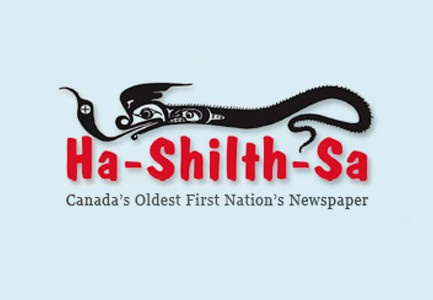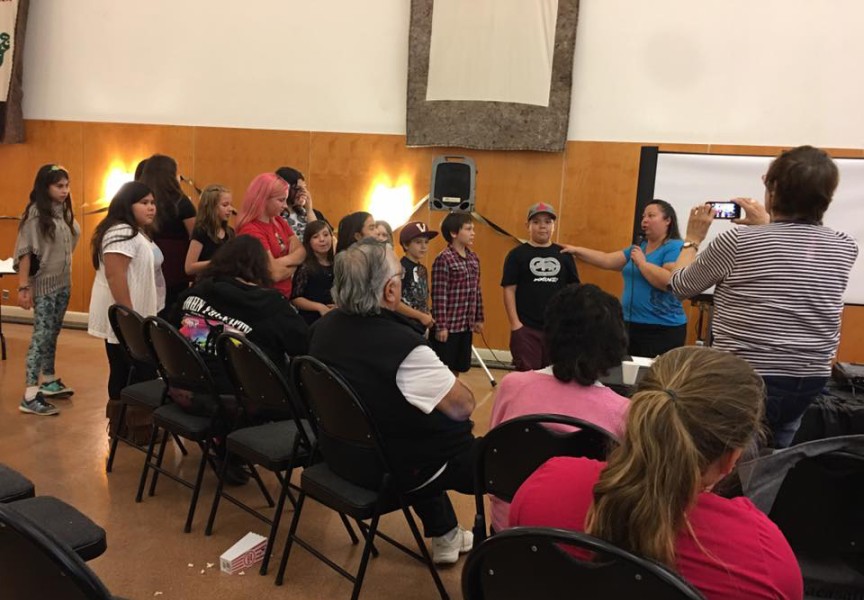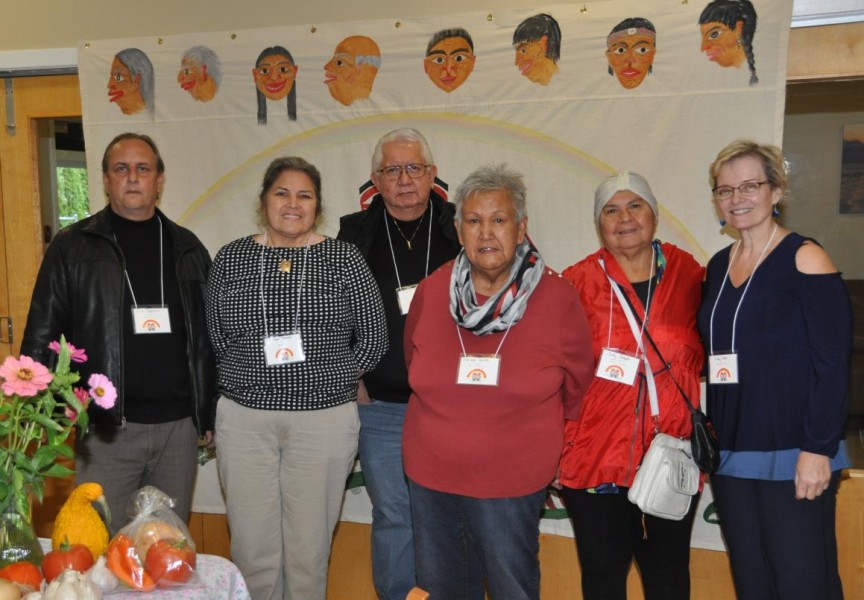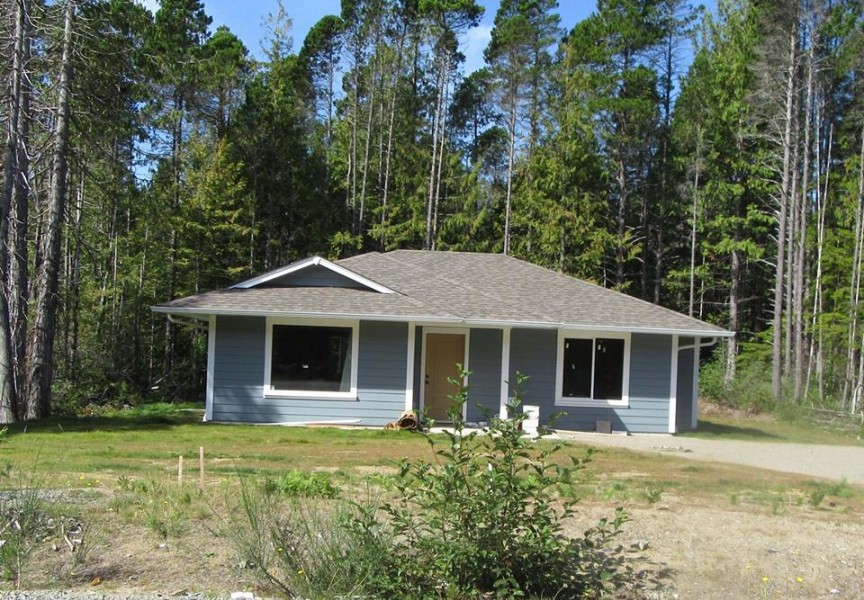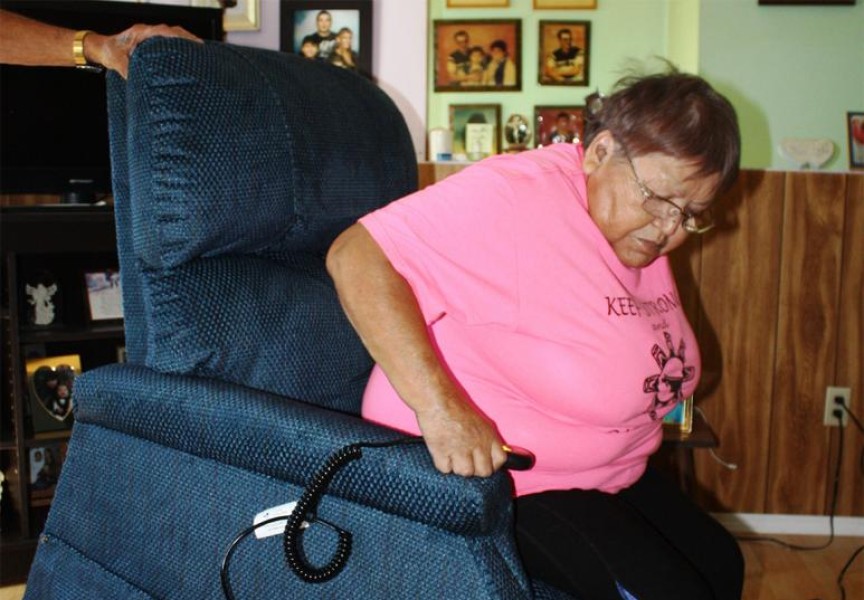“Sometimes, Tseshaht believes the government uses our resources like an ATM machine and not as natural resources to be protected and to be nourished,” said Chief Councillor Tapoo'scho'ah Hugh Braker on June 2.
He made the comment during his welcoming address to guests to the Tseshaht territory, including renowned scientist/broadcaster David Suzuki who had brought his Celebrating Coastal Connections tour to Maht Mahs gym that evening.
A case in point, said Braker, setting the tone of the event, occurred in March when Tseshaht was forced to take action to stop the Barkley Sound herring fishery (approved by Fisheries and Oceans Canada) in order to protect the still recovering stock.
Nuu-chah-nulth Tribal Council Vice-President Ken Watts introduced non-aboriginal guests to the Nuu-chah-nulth concept of hishuk ish tsawalk.
“Everything is one and all is interconnected,” he explained. “[Dr. Suzuki] shares the same sentiment with us that everything is interconnected. When we start taking things out of the earth, it affects everybody.”
The evening included a wide range of presentations, including a sneak preview of a new documentary on climate change in B.C.
“You are the second people on the planet to see it,” said Jay Ritchlin, director of the David Suzuki Foundation Western Canada. The work in progress, by documentary maker Ian Mauro, follows previous films on climate change in Canada’s Arctic and on the East Coast.
Ahousaht’s Cliff Atleo began his presentation in Nuu-chah-nulth, occasionally stopping to explain specific words, such as iisaak, “respect for self or for others.”
“We hang on to our language. That is our identity,” Atleo said.
“What we want to talk about tonight is climate change and how that impacts all people, not just Nuu-chah-nulth people,” he said. “I noticed, in the middle of winter here in the valley, Mount Arrowsmith looks like the middle of August. There’s no snow up there.”
It’s another indicator of how changes to historic weather patterns have crept up on us, he said. Part of that shift, along with related effects such as damage to groundwater supplies, can be attributed to the heavy industrial activity, mainly logging, that went largely unchecked for over a century.
“We once had wells in Ahousaht that were quite nice. Now we buy water,” he said. “That’s one of the impacts.”
Atleo warned the appetite for resource revenue, “for a small handful of people,” is insatiable, and leads to poor management practices and catastrophic environmental consequences.
“Why is it so hard to be careful, to do things right? Why is it so hard to comprehend that it is important to understand that all things are interconnected? That what we do here has an impact downstream?” he asked.
But now, with Canadians coming to recognize the growing environmental crisis, First Nations are now bringing their traditional knowledge and experience to bear “to help society deal with the challenges they are going to be facing – that indeed, we are facing now – by sharing.”
Tseshaht’s Ron Dick Sr. said he witnessed many of the unsustainable forest practices foisted on the environment.
“I am not ashamed to say I was a logger. I worked for three of the big companies and I saw it all happen,” he said. “I used to be a faller. There isn’t one thing in the bush I didn’t do. But I’ve seen everything pass by me, and all the big trees are gone. Now they’re logging what we used to call ‘piss-poles.’”
Where there used to be a few big companies, now there are dozens, all following their own agenda, Dick said. Those undersized logs are now being exported to other countries. It’s a practice that benefits too few people, he said.
Tseshaht Ha’wilth Albert Clutesi, through speaker Anne Robinson, delivered a warning before the viewing of Mauro’s documentary.
“He is pleased to see you here and he welcomes you to Tseshaht,” Robinson told guests. “He cares about what is happening on the land. He cares about what is happening in the river. He cares not only about our future generations but yours.”
The Tseshaht people are determined to protect all of those things that allow them to continue to be Tseshaht, Robinson said. And that is the approach we all need to take if we are to survive and move forward.
“Because the changes that have to be made, have to be made all around. He knows that. He is grateful that you are here.”
Mauro’s half-hour documentary opened with a look at the Fraser River sockeye run and expanded to a region-by-region look at the challenges posed by climate change.
Featuring both scientists and everyday people across the province, B.C.’s First Nations have a strong presence throughout, both in exposing the problems and providing the solutions. The completed version will be released this fall.
Following the screening, guests had the opportunity to provide feedback, both written and by means of a video station set up outside the hall.

